8 Huge Branding Trends in 2018: What’s New and Valuable?
Branding trends can have a lasting and permanent effect on your business. The future of your business depends on a compilation of factors, but mostly on you. It’s not the market situation or “bad luck” that make businesses fail. Most of the time businesses fail because of faulty decisions made by their founders and management team. But what exactly informs decisions making? There are several factors that typically influence business decisions from, competitor activities, to a target audience, technology and, of course, branding trends.
People thrive on trends. What’s new? What do I need to know to improve my offering? Where do others find success, and how can I use those findings and apply them to my brand? Trends dictate the general direction in which the field is heading. Trends are not strict rules, rather they are observations of reoccurring themes, but with time some trends become an indispensable part of our everyday reality.
Let’s see why, as a business owner, entrepreneur or brand manager, you should follow branding trends:
Why follow branding trends?
Branding has always been a complex field. In the past few years though the branding landscape has become even more complicated. Consumers are well aware of the latest technological advancements and want brands to be the pioneers of the digital revolution.
Additionally, it’s easier than ever to start and market a business. Social media and content marketing are the marketing techniques that any business, large or small, can leverage and invest in to grow exponentially. As a result, the competitor landscape has expanded from once being a very small space, ruled by a few large conglomerates, to more of a levelled playing field with an endless ocean of millions of small businesses with relatively equal access to the latest technological developments in marketing.
Consequently, following branding trends is a must for every business that wants to survive in this new cut-throat competitive environment so they can effectively cater to their ever-changing customer needs.
Top 4 Reasons to Monitor Branding Trends
Here are all the specific reasons why you should follow branding trends:
1. Keep a Close Eye on What Competitors Are Doing
When Nike ran a series of events across major cities in Europe, the company didn’t expect that brands like Adidas and Reebok would quickly follow with similar promotional offers.
What was once a distinguishing trait of Nike’s marketing, has become the expected norm of every other sports brand out there. So Nike changed their brand strategy once again and launched a free training programme instead. As a result, the Nike brand topped brand intimacy ratings[1] and consequently, the loyalty of its customers remains unwavering. So how did Nike achieve such enviable success?

Image via The Cut
You can start a trend and then all of a sudden find your strategy duplicated by thousands of other brands. While being a trend inventor or setter is challenging, if constant innovation is part of your culture you can position yourself as an industry leader. Trends, therefore, help you monitor and evaluate what others are doing. Once your strategy becomes obsolete, you’ll be forced to push your company towards further innovation or wither and fade.
Related: Brand Disruption, Be the Disruptor or Be Defeated
Adidas and Reebok rankings are high too, so, apparently, it never hurts to replicate someone else’s success occasionally. This is where the knowledge of brand trends becomes important too — trend identification provides an easier and more straightforward way to leverage competitors’ wisdom to promote your brand effectively.
2. Source Creative Ideas for Inspiration
We’re all creative in some form, it’s just sometimes it’s more of a struggle to be really creative. Most business owners are so entrenched in the day to day grind that they forget how to generate new ideas or block off time to think and feed their natural creativity.
Some find the right people to run the administrative and operational side of the business while they focus on the bigger pictures. Others are happy to be the jack of all trades. If you’re a small business owner you most likely associate yourself with the latter type. This means that your creativity might be somewhat stifled by the busy operational aspects of running the business so it’s essential to put time aside for critical and creative thinking if you’re to continue to grow.

Free Commons License Image via Pixabay
Trends are great for getting your creative juices flowing again. By simply feeding your brain and reading about trends you generate new ideas, be they NPD, running the business or market-related. You can also formulate a clear vision of where your company should be heading. Trends are overarching themes that can be found in the present but take shape in the future. By evaluating trends, researching, mixing and matching, you can develop your own winning strategy to propel the business forward to greater success.
We’re all busy and following branding trends might not be the first task on your to-do list. If you need professional help and want access to a detailed overview of the branding industry, book one of our transformational workshops and masterclasses. These workshops empower you to raise the visibility of your brand, increase sales, reduce customer acquisition costs and position your brand as the №1 choice for your customers. Check out the Persona Brand Building Blueprint™ Mastermind here.
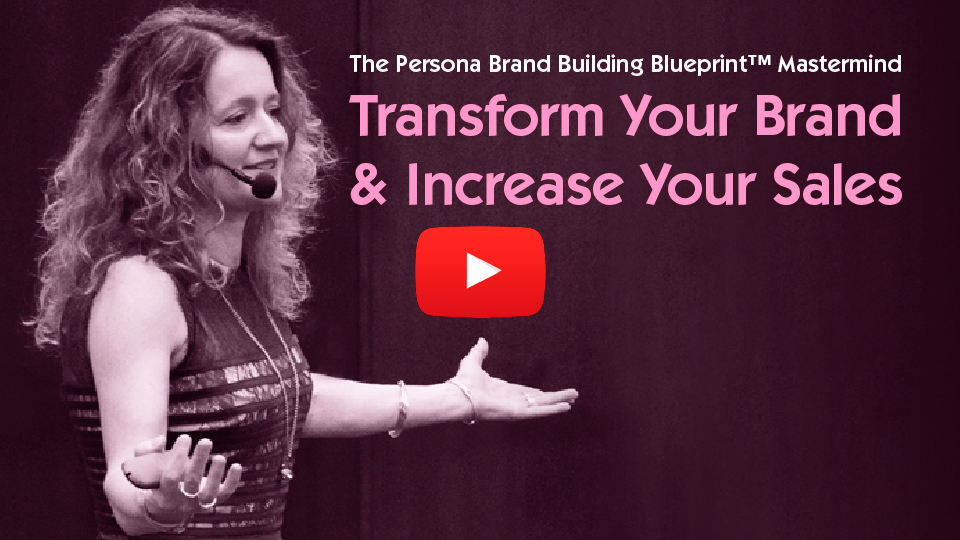
Build your standout brand at the Persona Brand Building Blueprint™ Mastermind with Lorraine Carter
3. Stay Relevant in The Ever-Changing Market
“You don’t have to advertise a good party; a good party advertises itself” – these were the words of Bill Svoboda at Inman Connect[2]. Same applies to companies. A great company can sell its product solely by the word of mouth. But what makes up a great company? Products, customer services, vision and the ability to innovate, in other words, generate a feeling of novelty and excitement in customers.
Relate: Brand Innovation – How to Identify New Growth Opportunities
People are naturally drawn to novelty. According to psychological research[3], new things make us feel good. When you follow branding trends, you can easily pick up on new things and apply them to your business. Whether it’s a fresh perspective on your brand or an advanced marketing technique, trends enable you to deliver offerings that are bound to attract attention because of their novelty factor.
4. Avoid Uninformed Decisions
Branding trends not only shape the company’s product offering but also dictate how the company’s environment looks. When you make business decisions it’s important to understand the internal as well as external factors. What expectations do customers have? What are the technological advancements you can use in your branding? Are there any innovative ways to market your business? If you understand the branding landscape and follow branding trends, it increases your ability to make the right decisions because you’re better informed by a broader range of influential factors.
Related: Rebrand or Refresh? That is the Question
As you can see, by diligently following branding trends you can improve your decision making. To access a comprehensive overview of the branding industry, join one of our transformational workshops and masterclasses. These workshops are packed with content that enables you to define, articulate, and differentiate your brand, as well as put branding trends to use for growing your business.
You can also purchase access to the Personality Profile Performer™Programme – an exclusive DIY programme for self-learners. As a part of the programme curriculum, you’ll discover how successful brands and branding works so you can apply those systems and processes to grow your business faster and more profitably.
Top 8 Branding Trends in 2018
Here we review the key branding trends of 2018 together with actionable examples of successful application to learn from:
1. Brands Humanisation
Branding is no longer a one-way street of push communications. Customers want real conversations and seek connection. In the past brands would push messages out to the masses and wait for a response. Because the number of brands was so minimal, push tactics worked. Nowadays, there’s an exponential number of brands all vying for customer attention and wallet share. So, just like in a real human conversation, you need to both share and listen. If you want to be heard as a brand, you’re expected to act like an authentic human.
Having a conversation with brands is one side of brand humanization. Another factor relates to brand identity. Brands are expected to not only act as humans but also be human. In 2018 brands need to have a strong personality and exhibit empathy. This can be achieved by developing a strong set of brand values and well-differentiated tone of voice.
Related: How to Develop Your Brand Tone of Voice to Increase Sales
Brand humanization doesn’t mean that you need to start a personal brand. Rather it means that you need to establish a real connection between you and your customers. This connection can take different forms.
Consumer research[4] shows that there are three dimensions to brand humanization.
- Sometimes consumers perceive brands as having human forms – they see brands as a set of personality characteristics, values, likes, and dislikes.
- Other times customers see brands as an extension of themselves, associating brands with their own personality.
- Finally, some customers see the relationships they have with brands analogous to their relationships with real people.
For an example of brand humanization check out this video from Progressive Casualty Insurance. The video features an upbeat character Flo, who represents the company’s values. The company is making a concerted effort to associate its brand with a real human being.
This is the most straightforward way to humanize a brand, but, of course, there are nuanced ways too. Consistent communication in social media, excellent customer experience and speaking like your customers using their language are all key elements of brand humanization.
2. Experience Economy
The experience economy term refers to a structural change in the economy that has been underway for the past several decades. The experience economy is being shaped by many factors and technology is one of them. Technology has put an emphasis on experiences as opposed to owning things. In 2018 this trend will remain prevalent.
In 2017 we have seen brands step up their marketing game with creative experiences. One of such brands is Campari. The company set up a masterclass event on a narrowboat during London Design Festival. The improvised pop-up bar offered everyone the chance to create a Campari cocktail and learn the history of the brand. Campari’s pop-up shop is a wonderful example of a brand experience created not to sell, but to educate and engage customers.
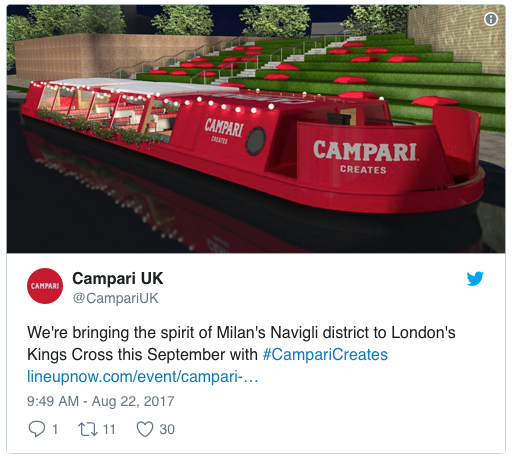
Image via Campari Twitter
3. Focus on Purpose and Relevance
Creating a strong clear brand purpose in 2018 is a must for every business. If you truly want to earn customer trust and loyalty you’ll have to put equal weight on societal interests coupled with your business goals. Customers prefer meaningful interactions that contribute to the greater good rather than just a one-time surge of happiness following the purchase.
There are numerous rankings that show the value of purpose[5]. The World Value Index measures brands on awareness of purpose. You’ll see companies such as Amazon, Google, Dove, and Microsoft occupying first places in this ranking. These are also amongst the world’s most valuable brands from a financial point of view. Clearly, having a brand purpose and showing your brand’s dedication to it pays off in the long run.
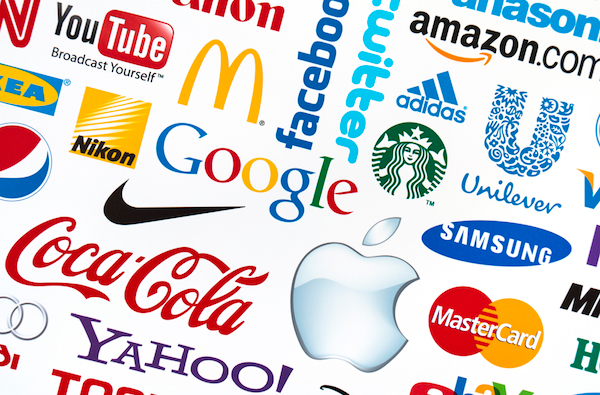
Image via Adweek
Related: Purposeful Brands, Why Customers Are Prepared to Pay More
In 2017 numerous companies attempted to show their dedication to purpose. Consider the case of 84 Lumber company. The brand ran a video during the Superbowl, that depicted a Mexican mother and daughter embarking on a journey to the United States. “The journey of the mother and daughter was a demonstration of the human spirit — grit, determination and hard work,” said the company’s CEO Maggie Hardy Magerko. “These characteristics represent what makes 84 Lumber and our country great. We want people that embody those characteristics, no matter where you’re from. If that’s you, our door is open.” The video gained controversial reviews, yet, it’s a great example of a company taking a stand on the matters that deeply affect their vision and purpose.
4. Build Brand Micro-Moments
As mobile is replacing regular desktop devices, the way consumers search for information is changing. We used to have long web browsing sessions. But today we’re interacting with the web through swift but very productive queries. These interactions can take place at any moment of our lives – when we wake up, have breakfast and on our way to work. We no longer see the web as a separate entity but perceive it as an indispensable part of life.
There are hundreds of moments each day where we stop and ask Google questions. And some of these questions are related to purchasing decisions. Queries such as “nearest coffee shop, “how to write a book” present opportunities for marketers to offer products at the exact moments when those products are needed. These opportunities are called micro-moments.
In 2018 micro-moments will conquer the branding space. People no longer see the internet as a source of entertainment. Now they want valuable, educational materials on top of having access to entertaining options.
The successful businesses of 2018 will take advantage of micro-moments and develop brand strategies to meet customer needs instantly, no matter where and when they arise.
Here is how micro-moments work: the moment you enter a query into a search bar, Google assesses your location and shows you the nearest coffee shops. Companies will have to embrace local marketing and SEO to reach first page rankings in local search. In future, micro-moments will dictate how companies approach customers.[6] Direct pitches and mass messages are things of the past. Predicting customer needs, identifying micro-moments and presenting results when and where customers need them will become a priority for every business that wants to succeed.
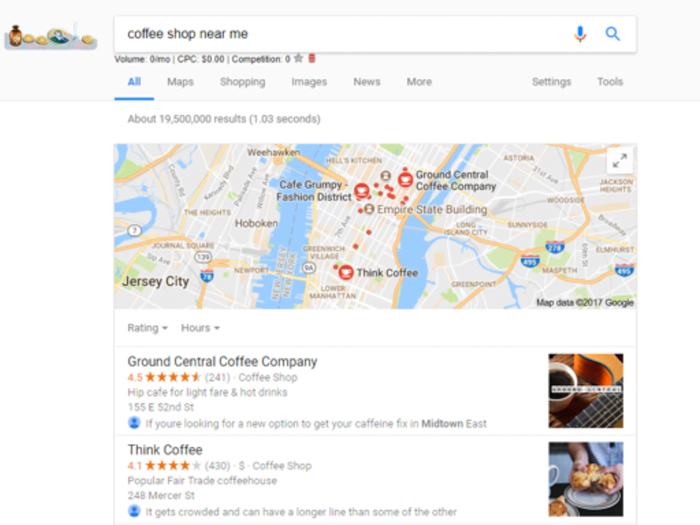
5. Brand Activism
Brands often shy away from politics and social issues. These fields are so full of conflict that it could be suicide for a brand to express political views. However, in 2018 customers are expecting brands to voice their opinions and express their mission loud and clear.
People no longer believe that business should remain silent. They want truthful conversations where brands claim their allegiance to one or the other camp. This, of course, presents an enormous challenge for brands.
Related: How to Use Brand Activism to Mobilize Your Customers
However, brands like Patagonia don’t shy from taking a stand when the issue lies at the heart of what they stand for as evidenced by their recent reaction to President Trumps decision. In fact, their activism is a rallying cry for their core target audience who believe what they believe and are consequently loyal, long-standing customers—their brand champions.
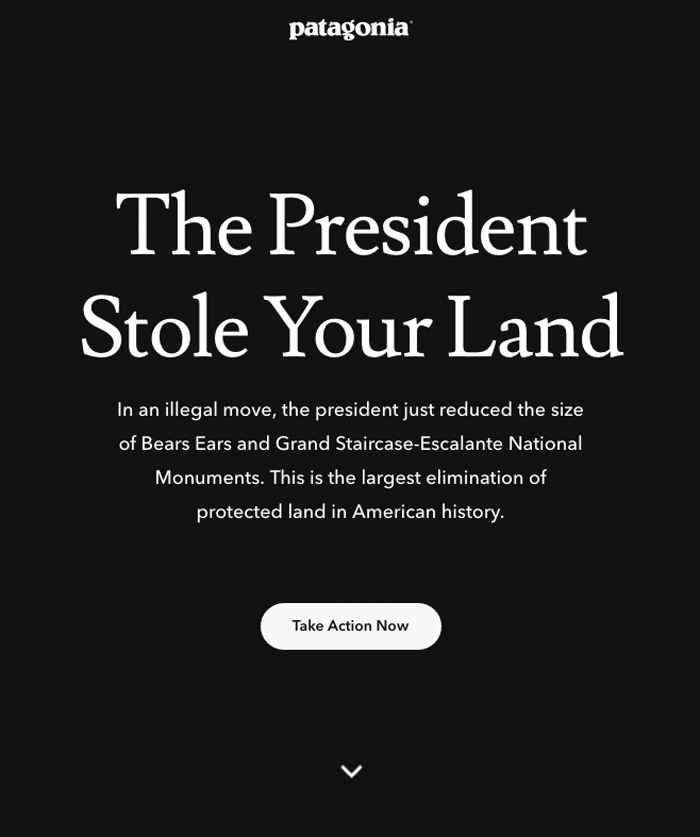
Image via Patagonia
According to Refinery29, 91% of millennials will swap a brand for the one supporting a compelling cause. In fact, not taking a stand could be the cause of negative impact on a company’s bottom line. Brands like Nike, Apple and Google are stepping up against the bigotry and discrimination. When the big brands make their move, they change overall customer expectations. Thus, in 2018 it will be important for every brand to speak up and support a cause congruent with its core brand values.
Related: Social Responsibility, How to Build a Socially Conscious Brand
SME/SMB business owners too have the power to fight for what they believe in. Consider the case of The Willary. The owner of the company wrote a short blog post where she gives a clear and actionable advice on what to wear to Women’s March. The post shows that the company supports an important public cause while also providing the readers with nonintrusive product suggestions.
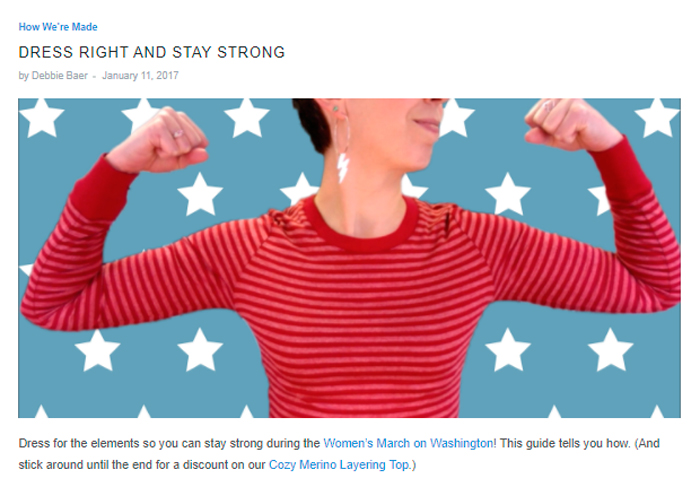
Image via The Willary
6. 360-Degree Immersive Branding
This trend builds upon the trends of brand humanization and the experience economy. Technology advancements often dictate how brands conduct their branding and marketing activities. With the advent of AI and AR, the landscape of branding changes from being static and product-driven to being focused on experiences and personalization.
Brands have long been more than just companies. Business presents a certain power in the world, and with power comes responsibility. Consumers in 2018 want brands to become their guides in the world of technology. Fortunately, technology also provides a great opportunity for companies to acquire and retain a loyal following.
The applications of technology are numerous. From chatbots that act and think as humans to immersive 360-degrees visual experiences, technology enables your brand to become more human and delight your customers.[7]
Related: Using Video To Broadcast Your Brand Message So You Attract Your Ideal Customers
Starbucks is already trying to benefit from this trend. Last year the brand revealed a chatbot barista that can take online orders. The app creates an illusion of a real human interaction on top of simplifying the process for ordering a drink – you can order online and pick up the drink without having to queue or wait in the line. This is a truly immersive experience, that delights customers from start to finish.
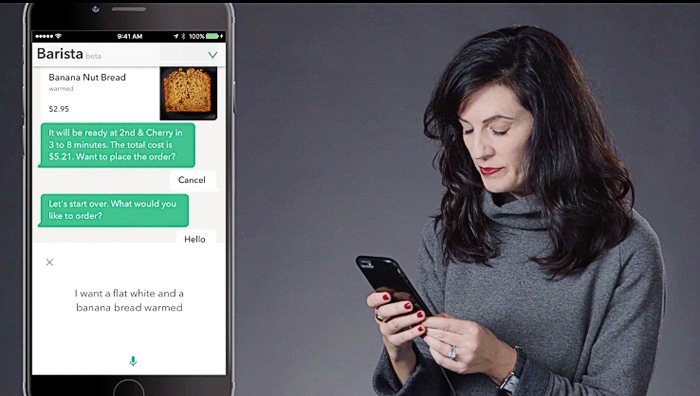
Image via TechCrunch
7. Branding That Resonates with Customer Psychology
Brands are increasingly turning to advancements in neuroscience to understand consumer behaviour so they can find new ways to promote their products effectively. Companies historically sought their market knowledge and research findings by conducting regular customer surveys. However, now business owners are realizing that surveys don’t provide very accurate insights because consumers use their rational minds when they answer the questions, but when they purchase products they succumb to the power of the emotional brain.
In 2018 sciences like anthropology and psychology will become more important. Neuroscience can reveal deeper insights about the consumer and help marketers craft more impactful messages.
Related: Use Psychology in Your Brand Strategy to Create Irresistible Brand Experiences and Increase Sales
Sometimes neuroscience can be used as a marketing method. Check out how Avocados from Mexico centred their marketing campaign at SXSW around happiness as an emotion. Customers of Avocados used giant interactive touchscreens to place customer orders. While they were waiting for their order, a unique facial tracking app was busy registering their facial expressions. If they appeared happy long enough, they were rewarded with an animation.
8. Branded Communities
The last trend of 2018 refers to social media and its place in the branding world. Social media is mostly perceived as a marketing instrument where engagement and conversations rule. However, social media can become a powerful tool in branding as well.
In 2017 we’ve seen brands launching their own communities dedicated to a niche topic. Conversation in social media has changed from pushing your own content and waiting for people to like it to creating an engaging environment for everyone to contribute.

Image via Facebook
The branded community enables you to position yourself as an expert and post occasional promotional messages. Branded communities are effective because the concept implies that everyone in the community is equal. This removes barriers and makes people more relaxed. In 2018 we’ll see more branded communities on social media because they’re a great way to engage your audience without being too salesy.
Related: Personal Branding: We Are All CEOs (Part 1)
A Final Word on Brand Trends
Understanding brand trends is a big part of business success. When you follow relevant trends you’re better prepared for market volatility triggered by, for example, changes in customer expectations and competitor behaviour. 2017 has been packed with groundbreaking changes, from digital transformation to focus on brand purpose. In 2018 we’ll see these trends growing stronger coupled with the emphasis on real human connection and experience-based interactions with customers.
If you’d like to know more about the latest advancements in the branding field, check out one of our transformational branding workshops and masterclasses. On top of providing you with invaluable information about branding trends, these workshops enable you to increase customer loyalty, grow market impact and make your brand highly visible. Check out the Persona Brand Building Blueprint™ Mastermind here.
Alternatively, take a look at our Personality Profile Performer™Programme – a simple way to transform your brand without leaving your home or office. It’s a unique step-by-step brand building ecourse that empowers you to make your brand stand out and attract your ideal audience.
Questions to consider:
- How often do you check branding industry news?
- When you see branding trends and news do you evaluate about how to apply them to your brand strategy?
- How would you determine a short-lived tendency from a promising trend?
- What are the fields that influence branding industry apart from marketing and technology?
- Does following trends help brands stand out or blend in?
[1] http://wwd.com/fashion-news/fashion-scoops/nike-brand-loyalty-consumers-followed-by-levis-under-armour-10482190/
[2] https://www.inman.com/2017/09/25/how-to-stay-relevant-in-an-ever-changing-market/
[3] http://www.dana.org/News/Details.aspx?id=43484
[4] http://www.sciencedirect.com/science/article/pii/S1057740816301061
[5] http://enso.co/worldvalue/
[6] https://www.thinkwithgoogle.com/marketing-resources/micro-moments/future-of-marketing-machine-learning-micro-moments/
[7] https://hbr.org/2017/06/when-ai-becomes-the-new-face-of-your-brand

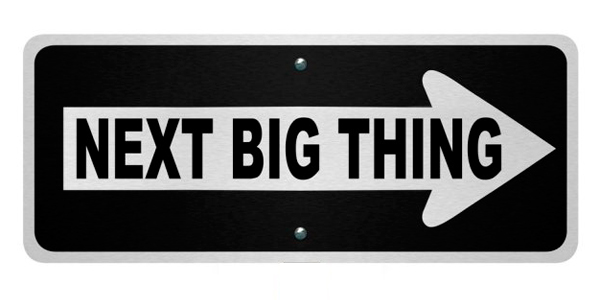





Leave a Reply
Want to join the discussion?Feel free to contribute!